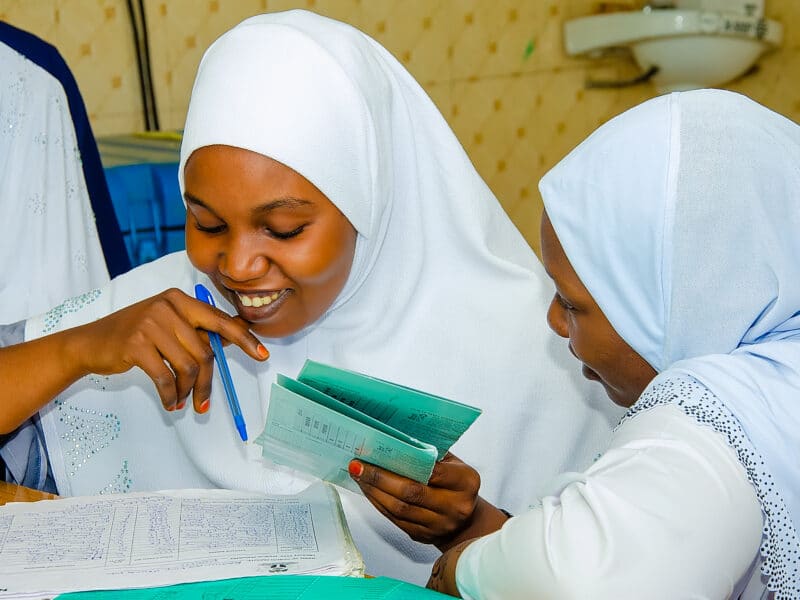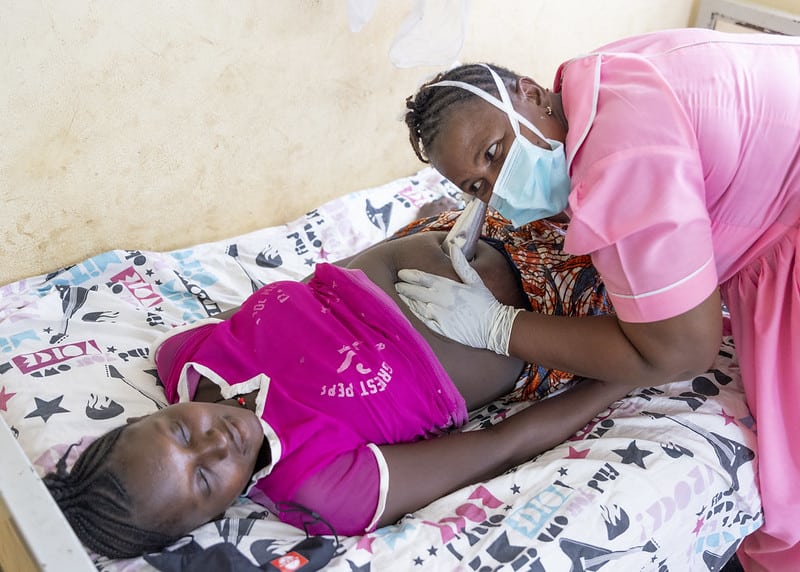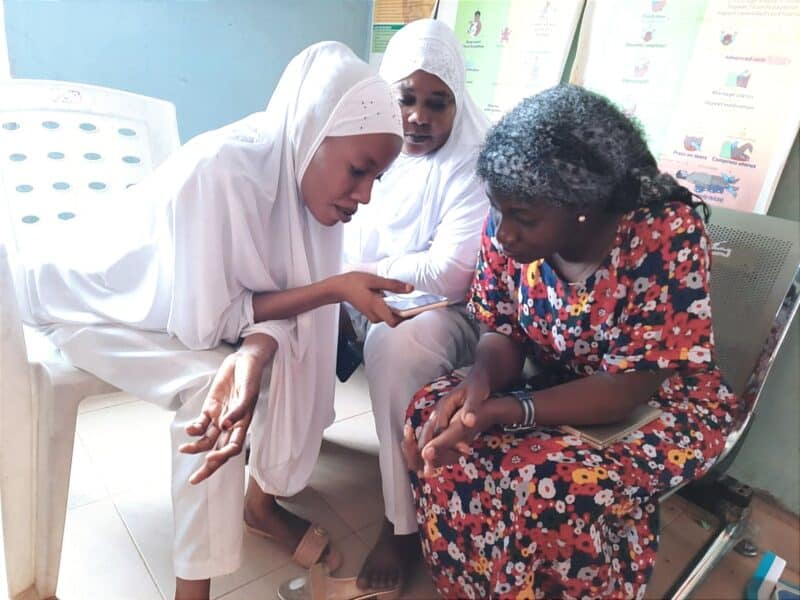Before the session, no one in the circle knew the song. But here they were, singing in unison, complete with coordinated hand and body gestures about the signs of danger in pregnancy that mean a woman should be immediately rushed to a health facility for care.
Many of the women can’t read a pamphlet or understand a chart. But soon they have all the knowledge they need to help save a life, maybe their own.
The hand gestures are part of “Community Communication for Safe Motherhood” and a component of the Johns Hopkins Center for Communication Programs’ five-year, USAID-funded Keneya Jemu Kan (KJK) project in Mali. Piloted in 2017 over three months in seven villages in the southern part of the West African nation, the program was so successful – doubling the number of facility-based births during the time period – that KJK is already expanding the work in 38 more villages.
The idea is to teach women in these communities about the signs of danger in pregnancy and make sure they understand the importance of seeking care at a medical facility if they experience any.
In rural Mali, nearly one-third of women give birth at home, placing them at risk in the event of an emergency. Maternal mortality rates are high. Medical facilities are often far away, with transport and treatment more expensive than many can afford.
“We needed to empower and educate women with low literacy so that when they see a pregnancy danger sign in themselves or their friends and family, they know what to do,” says CCP’s Mohamad Syar, one the program officers working on the KJK project. “Instead of keeping their concerns to themselves, they will now know how to tell others when something is wrong, even when such discussions might have been taboo in the past.
“We hope this will get more women to know when they should go to a medical facility with the ultimate aim of reducing mortality among mothers and their babies.”
KJK supports the Ministry of Health and Public Hygiene to train community health volunteers who run regular sessions in their own villages, utilizing informal social networks to bring key health information to people who wouldn’t otherwise receive it. By assisting the ministry in this work, KJK hopes to ensure that the work can continue beyond the life of the CCP-led project.
The pilot phase of the initiative in seven villages trained 128 community volunteers and reached more than 14,000 people, including more than 10,000 women.
A survey conducted by CCP after the intervention found that 99 percent of women could name three or more danger signs during pregnancy and 90 percent said that having a baby at a health center is now a norm in their community.
A major component of Community Communication relies on memorable hand and body gestures that enable community members to learn, recall, share and decide to act when a pregnant woman shows signs of danger. For instance, in order to remember that fever is one of the nine maternal danger signs, you cross your hands over your chest while shivering and saying “fever” and for “severe bleeding,” you push your hands away from your groin to represent the blood flow. Each part of the song they learn mentions a danger sign and has an associated gesture, ending with a refrain saying the woman should be rushed to the hospital.
The gestures were developed as part of CCP’s work in Northern Nigeria.
Kadiatou Kone was a home birth attendant in her village before she became a health volunteer under KJK. She says she is even more motivated than when she began because she was able to save the life of her nine-month pregnant daughter-in-law because she knew that a high fever was a danger sign.
“Thanks to that, we didn’t wait to go to the health center,” Kone says.
Syar says educating villagers about the danger signs is the first step in lowering maternal mortality.
“If they don’t know the danger signs, they stay home instead of doing everything they can do get to the health facility,” he says. “Even if it’s far, even if it’s challenging to get there, once pregnant women get to the health facility, they will receive all the care they need.”






